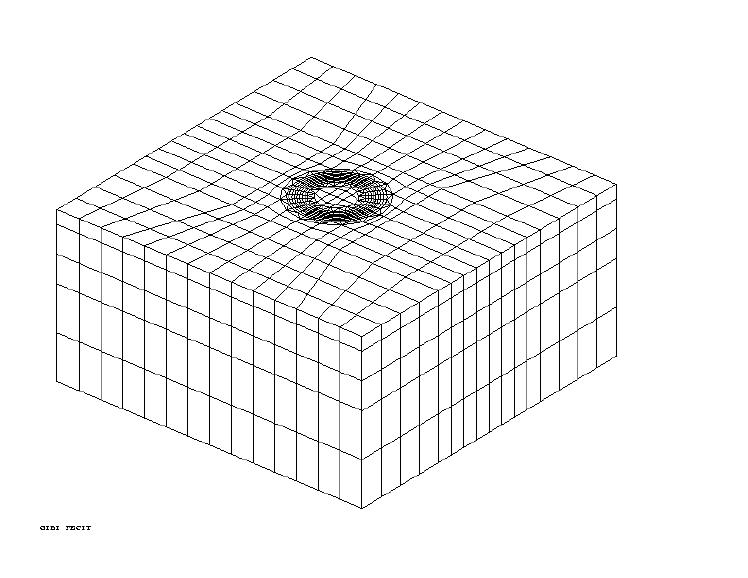12. M modeling#
The crack bottom is closed. We calculate \(G\).
12.1. Characteristics of modeling#

As for modeling A, the advantage of this modeling is to represent the entire crack background, which is a closed curve, without taking advantage of the symmetries of the problem.
A rigid body rotation load is initially applied in order to place itself in a situation of major transformations. A tensile load applied to the deformation is then taken into account in a second step.
12.2. Characteristics of the mesh#
Number of knots: 11114
Number of meshes and type: 2432 PENTA15
The middle nodes of the edges of the elements touching the bottom of the crack are moved to a quarter of these edges. The mesh is identical to that used for modeling A.
12.3. Tested sizes and results#
Identification |
Reference |
Reference type |
\(\text{\%}\) tolerance |
G local Node \(N403\) - Discretization LINEAIRE, R_ INF and R_ SUP |
11.586 |
|
3.0 |
G local Node \(N2862\) - Discretization LINEAIRE, R_ INF and R_ SUP |
11.586 |
|
2.0 |
G local Node \(N375\) - Discretization LINEAIRE, R_ INF and R_ SUP |
11.586 |
|
3.0 |
G local Node \(N292\) - Discretization LINEAIRE, R_ INF and R_ SUP |
11.586 |
|
2,4 |
\(\mathit{max}(G\mathit{local})\) - Discretization LINEAIRE, R_ INF R_ SUP |
11.59 |
|
2.5 |
\(\mathit{min}(G\mathit{local})\) - Discretization LINEAIRE, R_ INF R_ SUP |
11.59 |
|
2.0 |